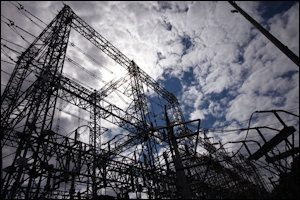by James A. Bacon
While acknowledging regulatory and market uncertainties that could change its thinking, the Appalachian Power Company (APCo) plans to meet its projected demand growth over the next 15 years through solar power, wind power, battery storage, energy efficiency initiatives and demand-side management strategies, according to the company’s 2016 Integrated Resources Plan filed earlier this month. Renewable solar and wind energy sources would provide roughly one-quarter of APCo’s generating capacity by 2030, but the company would continue operating most of its existing fleet of coal- and natural gas-fired generators.
Roanoke-based APCo serves 526,000 customers in Virginia and another 431,000 in West Virginia and Tennessee, making it the second largest electric power producer serving Virginia.
Meeting the requirements of the Clean Power Plan, a sweeping overhaul of the electric power industry designed to reduce carbon-dioxide emissions, will result in incremental costs to APCo of $300 million to $600 million, the company estimated. Several states have challenged the constitutionality of the plan, however, and U.S. Supreme Court action may not resolve the legal issues until next year.
APCo forecasts that electricity demand will increase at an average annual rate of 0.3% annually. For purposes of comparison, that is considerably lower than the 1.5% annual growth rate projected by Dominion Virginia Power, whose service territory is expected to experience faster population and economic growth, goosed by growth in power-hungry data centers in Northern Virginia. APCo also assumes that the installation of 60 MW (megawatts) of rooftop solar generation by homeowners and businesses will cut into electricity demand.
The APCo IRP describes what it calls its “Hybrid Plan” that “attempts to balance cost and other factors while meeting APCo’s peak load obligations.” Major elements of the plan include:
- Adding 20 MW of large-scale solar energy by 2018, with subsequent additions reaching 590 MW by 2030.
- Adding 300 MW wind energy by 2018, followed by future additions totaling 1,800 MW by 2030.
- Implementing energy-efficiency programs reducing energy requirements by 203 MW by 2030.
- Adding 20 MW of battery storage in 2025.
- Retiring two natural gas-converted Clinch River generating units by 2026.
Over the 15-year planning horizon, the Hybrid Plan would reduce coal-fired assets from 61.2% of nameplate capacity to 47.8%, while wind and solar assets would climb from 5% to 24.8%. Because wind and solar generate power only when the wind is blowing and the sun is shining, actual energy output from renewables would be lower than the nameplate capacity, increasing from 2.7% to 18.5%.
Making the job trickier is the fact that APCo’s peak load demand occurs on winter mornings rather than on summer afternoons when Dominion and most other mid-Atlantic utilities experience their peaks. The early-morning winter peak demand makes solar energy a poor match. While rooftop solar will help reduce APCo’s total energy consumption, solar’s peak production mid-day in summer months “does not alleviate APCo’s overall distribution and transmission requirements as they relate to peak demand,” states the IRP.
Likewise, APCo finds itself an odd man out in the PJM regional transmission organization (RTO), which creates wholesale markets for the buying and selling of electricity. “The Company’s load profile does not align with that of PJM. APCo experiences its greatest demand during the winter, and hence is a winter-peaking entity. PJM as a whole operates as a summer-peaking RTO.” The result: APCo is short on energy in winter months.
Another challenge will be accommodating the expected surge in distributed generation (DG) in the form of rooftop solar. “Higher penetration of DG can potentially mask the true load on distribution circuits and stations if the instantaneous input of connected DG is not known, which can lead to underplanning for the load that must be served.” APCo foresees the need to install smart inverters in its distribution grid to control “voltage and other circuit parameters.”
Meanwhile, the company projects a need to upgrade its electric transmission grid (which handles larger, longer-distance electricity flows than local distribution lines) to interconnect with merchant generators providing up to 1,000 MW of additional capacity over the next several years.
To provide more flexibility, APCo will add 20 MW of battery storage. While batteries will not store enough electricity to meet wide swings in electricity demand for long periods of time, they can help smooth electricity output resulting from fluctuating solar and wind generation.
“This plan is essentially a snapshot of a process that is constantly under review based on changing market conditions, the economy, and the adoption of new products by consumers among many other variables,” said Charles Patton, Appalachian’s president and chief operating officer, in a press release. “We, as a company and an industry, continue to plan and adapt to the constant change of our markets so that we can remain healthy and deliver reliable power to our customers—now and in the future—at a reasonable price.”



